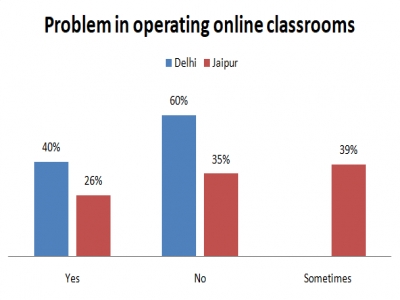
Answering India’s School Health problems with Technology and Intervention during COVID-19 imposed Lockdown.
There is no doubt that the situation of lockdown for India came at the worst time possible. Already battling with economic slowdown, grappled by inexplicable poverty and looming hunger, the Indian man swallowed the news of a sudden nationwide lockdown with his dinner on the night of 23rd March 2020. Little did we know then, that life as we knew it was about to change drastically.
Unprecedented and constant extensions of the lockdown; combined with mental, financial, social and physical exhaustibility has shattered the will of the common man in this battle against the worst public health crisis the world has ever known. Besides the true capitalist, one of the most adversely hit groups have been over 260 million in-school Indian children whose lives have been disrupted due to the switch to online teaching and constant stress in the household.
In April 2020, School Health Annual Report Programme (SHARP NGO) did an assessment of school teachers in two major metropolitan cities (Jaipur and Delhi-NCR.) Teachers were asked to answer a spectrum of questions related to lifestyle changes, online teaching, administrative and parental support, familial problems and challenges of remote education. Emergency remote teaching (ERT) is a temporary shift of instructional delivery to an alternate delivery mode due to crisis circumstances, in this case being the lockdown.


It was concluded that while provisions are being made to make internet and online platforms accessible and comprehensible for students, teachers have not been trained to adapt to these changes. More than 60% of teachers highlighted their technological handicap to operate software, and the embarrassment of taking help from their students or younger colleagues.
Most schools are trying to fit it 8 hours of teaching into less than 6 hours, which would mean that mental and emotional capacity of both students and teachers to absorb and impart information gets ignored. This is leading to prolonged mental health problems which may last much longer than this lock down.
With the loss of distinction between the private and the professional, a female teacher faces the double burden of managing her roles as a homemaker and an educator. Since the teacher can only do so much, the role of a parent becomes integral.
We realized early on that the major roots of stress and anxiety were the uncertainty, misinformation and digital gaps surrounding the school communities. Hence, those were exactly what we started addressing with the help of counseling, knowledge building platforms and digital accessibility.
Based on the findings of the study, zone-wise online counseling teams were set up across India to promote healthcare in schoolsduring the transition to ERT. With the help of gradual one-on-one counseling with students, teachers and parents; we were able to successfully introduce stress reducing activities in the online education model.
The team also curated large scale educative and comprehensive materials with scientific information on nutrition, immunity boosters, Covid-19 prevention and streamed the information right into the community through popularly consumed online platforms like Whatsapp, Tiktok and Instagram.
Feedback mechanisms were built into the implementation model by weekly follow-ups and interactive activities.
The nervousness around technology was catered to with the help of the very technology that caused it. By working closely with teachers and administers, we were able to address a majority (93%) of Frequently Asked Questions, reduce anxiety levels and increase overall technological intervention in India’s remotest areas.
Undeniably, the world after Covid-19 will need time to solidify its financial groundings, but it will also be more technologically sound, more awareness of health hazards and more sensitive the needs of the community. Problems of social development caused by inclusivity and accessibility may not eliminate, but are hoped to reduce. With the possibility of impacting the farthest, social development organizations have a chance to create dynamic change like none before. Using current technological platforms and knowledge systems with become monumental here. Additionally, these interventions would require a network of partners and support from corporate who possess the dexterity. With the right vision and expertise, there is an opportunity to do a lot more than what merely meet the eyes.
Written By-
Juhi Arora and Mahima Mehra, SHARP NGO
